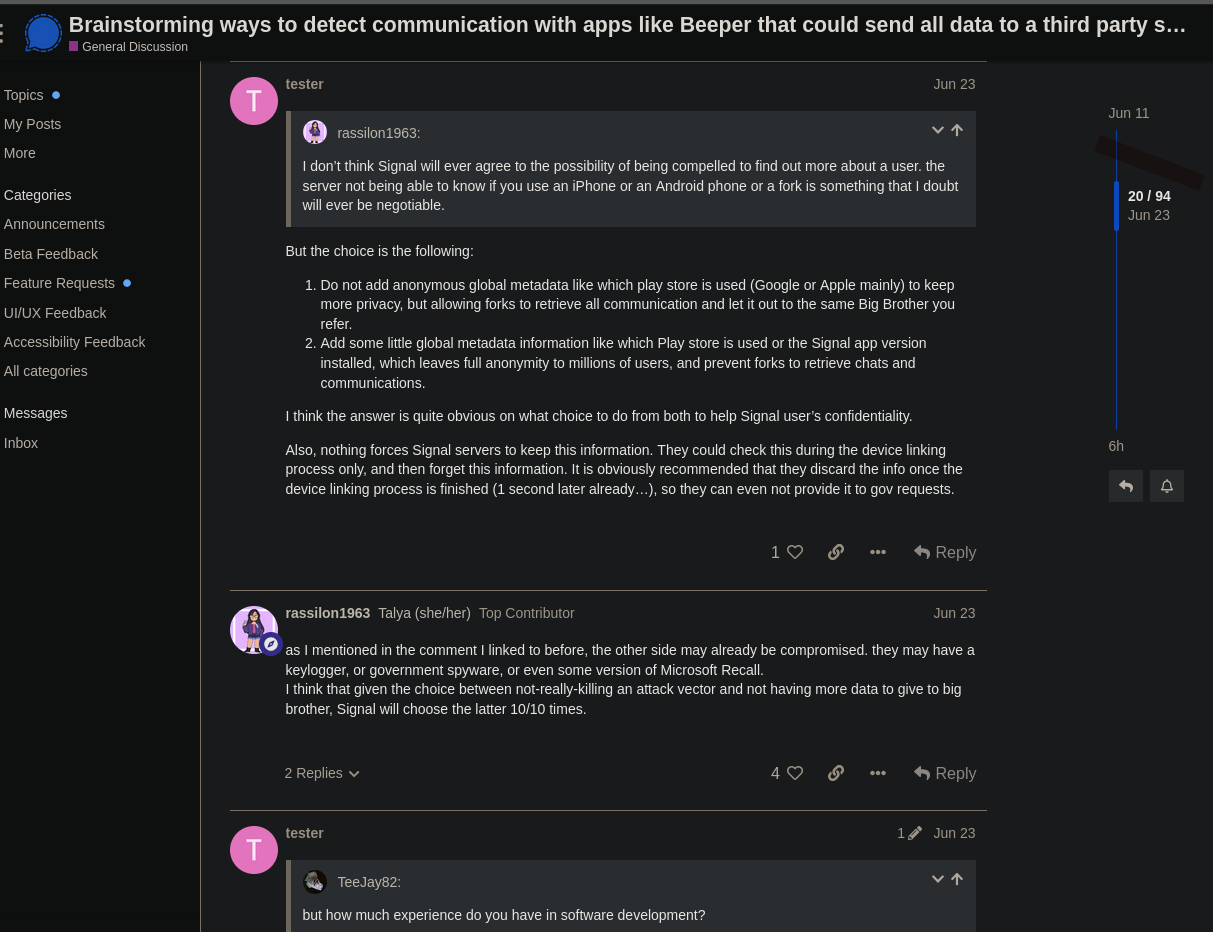

Tell me you dont know how supply lock-in is a tool for geopolitics without telling me you dont know how supply lock-in is a tool for geopolitics.


Tell me you dont know how supply lock-in is a tool for geopolitics without telling me you dont know how supply lock-in is a tool for geopolitics.


Its in the original post. To create a distraction less or more less environment to prepare for exams.
Must admit, those fields are precisely the ones I use in my filenaming convention. Other DMS put that in their databases but alas that’s just trading one stack for another.
Other ones put it in XMP metadata of the pdf themselves. But I guess the work involved would be similar.
I don’t know.
My main point is: Why would you want a mail specific stack of hosting, storage, indexing and frontends? If it’s all plain text anyway so the regular storage solutions for files come a long way.
There is an entire industry (which has its own disadvantages) to get communication artefacts out of those systems and put it in document management systems or other forms of file based archival.
I had roughly the same goals ( archive search 2 decades of mail) but approached it completely different: I export every mail to PDF with a strict naming convention.


Because the actual export, transform and loading of multiple banks and accounts data is cumbersome its holding me back.
So curious to read about GoCardless.
But is that also for consumer?
And is it this: https://gocardless.com/pricing/


Not for Photos specific but F2 seems to fit some of your use cases. https://github.com/ayoisaiah/f2
Even can use Exif fields as variables in the naming scheme. https://github.com/ayoisaiah/f2/wiki/Built-in-variables#3-exif-variables
If an historical timeline uses this labeling system it can’t omit the NT part though. Windows NiceTry came out in 1993 but also long after that MS had MS-DOS based editions (up until Windows Me iirc)
Isnt CAPSLOCK case for screaming? 😁
Also I’m very much cautious about them on anything browsing related. Discovered (after others also) they let their search-pages-in-a-shop get indexed.
Meaning I could go to Caterpillar, search for “Wabtec is better” and then this search url (with 0 products) would turn up in Google searches and that URL persisted. Text and all.
Basically one could spray-paint and tag sites with this graffiti. Shop admins didn’t even have means to remove it.
Problem ignored and stayed this way for months.


Loosing vast amounts of historical posts or would I say “cultural heritage” is a shame but I couldn’t trust the party hosting it …
So with Twitter I did the same, 13 years of tweets. Even took a one month payment on a bulk erase / unlike / unfollow / unretweet service to get it done in a reasonable amount of time.
I looked briefly through their site:
But for me the biggest concern is development of a “new” decentralized protocol. IMHO there are enough protocols around to choose and pick from and help moving them forward instead of making one from scratch.


Can confirm, tested it with Signal forum, also discourse. Fireshot stops at the end of the current loaded messages (20 of 94) and doesnt scroll further by itself.



Not sure, search on “screenshot lazy load Fireshot” or “screenshot lazy load Linkwarden” does not turn up anything conclusive.
Do you have an example?


It’s also the use cases supported by Linkwarden:


Dont know if it’s illegitimate otherwise 😉
But my user story is like this:
I want to preserve and archive information I used because it’s a reflection of the things I did, learned and studied throughout life.
Then my use case are:
My current workflow:
I would like to automate the last 3 steps of my workflow.


This, but for a Fireshot like tool. Screenshot and pdf of webpages in their entirety by scrolling while shotting. In bulk, with CLI.
We as a species make up terms on a daily basis, so I feel the liberty to do the same. Glad it doesnt give any results because it indicates original thought.
If large parts of the supply chain consist of suppliers (vendors) on the other side of the earth, one can focus on one vendor lock-in or one by one (for analytical purposes) and optimise for that but often the bigger picture of a complex supply chain is missed.
Hence the aggregated lock-in.